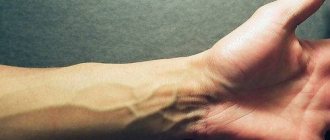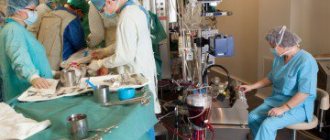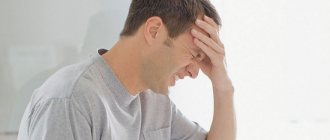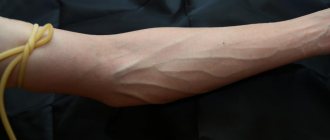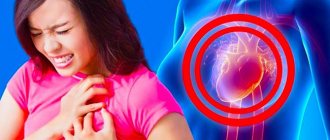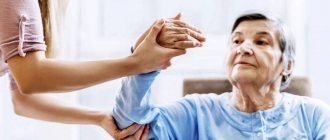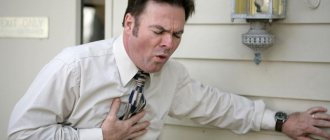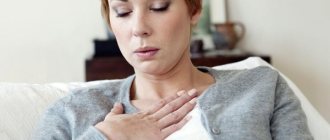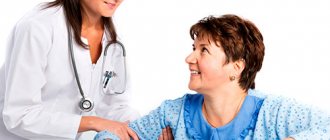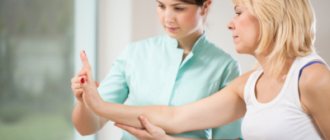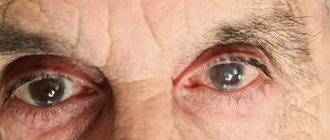What causes this behavior in patients?
A complex of different reasons leads to this complication:
- A chronic stressful condition that develops as a response to the complete loss or limitation of the ability to move, speak, and other lost functions.
- Depression is a frequent accompaniment of the post-stroke state. Against the background of isolation, loss of interest in life, and a state of hopelessness, aggression can become a kind of mental response of the body, a defensive reaction.
- Emotional instability - this type of mental disorder is typical for most patients who have limited physical and mental health after any type of stroke. Periodic states of apathy and oppression are replaced by affective outbursts of anger. They are joined by capriciousness, demandingness, intolerance, and selfishness.
The mechanism for the development of this emotional-volitional problem lies in a malnutrition of certain parts of the brain, leading to an imbalance in the metabolism of vital enzymes and hormones. Most often, a deficiency of serotonin and norepinephrine develops, and they, in turn, lead to mental reactions beyond the control of the sick person.
Medical care for stroke
Successful rehabilitation of a person after a stroke depends not so much on medications, but on the provision of timely assistance. If a person is struck near you, then you need to follow simple steps that significantly increase the success of further treatment:
- To make breathing easier, free your neck: take off your scarf, tie, sweater, unbutton your shirt, etc.
- Place the patient comfortably.
- To ensure blood flow from the brain, place a pillow or cushion under your head.
- If you have the skills, you need to measure your blood pressure. If it is high, then give a captopril tablet or give an injection. You can reduce it by a maximum of 20 units. Without these skills, additional manipulations are prohibited.
Read also: Lacunar stroke of the brain
Before all the points described above, you need to call emergency medical help. Upon her arrival, the patient must receive appropriate drug treatment, which, as a rule, includes drugs that relieve swelling, destroy blood clots (clots) that impair blood circulation and brain function. During an attack, oxygen starvation of cells occurs, the patient experiences partial paralysis, impaired speech coherence, and dysfunction of internal organs.
Antiplatelet drugs for stroke
One of the groups of drugs that prevent platelets from sticking together to form a blockage are antiplatelet agents. Medicines are taken regardless of the type of stroke (hemorrhagic or ischemic). Effective medications include:
- Aspirin is a medicine that thins the blood. Can act as a prophylactic agent. The advantage of this medication is the least likelihood of side effects.
- Tiklid - reduces the likelihood of platelets sticking together, slows blood flow.
- Clopidogrel is an effective but expensive medicine. Not recommended for use by people with tuberculosis, ulcerative colitis, stomach or duodenal disease.
- Pentoxifylline - improves blood circulation in places of impaired blood supply, has an antithrombotic effect.
Blood clotting drugs
Anticoagulants are drugs after a stroke that reduce the likelihood of an existing blood clot enlarging and the appearance of new ones. This therapy avoids further development of thromboembolism and neurological symptoms. It is prohibited to use them in the drug treatment of stroke if a person has a predisposition to bleeding or hemorrhagic syndrome, which is caused by the use of blood substitutes, rheopolyglucin, or anti-inflammatory non-steroidal drugs in combination. Blood clotting is prevented by:
- Nadroparin calcium, administered subcutaneously.
- Heparin in ampoules.
- Enoxaparin sodium.
- Warfarin is an indirect agent. Use under supervision because it can cause bleeding.
- Phenilin - tablets orally.
Vasoactive drugs
Drug treatment using vasoactive agents is aimed at improving cerebral circulation, dilating blood vessels, and providing an antihypoxic effect. Doctors often use:
Features of aggression after a stroke
This behavior can develop immediately after an acute brain injury, but more often the signs of this problem appear gradually.
An attack of aggression after a stroke is preceded by:
- depression of the general mental state, low mood, apathy, indifference, “withdrawal” into oneself;
- sleep disorders, loss of appetite and body weight;
- suicidal thoughts;
- in a later period, pronounced mood swings develop, accompanied by emotional and mental flattening.
Against this background, the first outbreaks of anger begin to appear. It can be directed either at people or at oneself, or abstractly - at some ongoing events. Gradually the attacks become longer and more intense.
During a paroxysm of aggression after a stroke, the patient begins to scream, gesticulate vigorously, shower others with curses, and accuse others of non-existent actions. In the midst of it, the patient may assault him or throw objects that come into his hand. His breathing is noisy and rapid, his face is twisted with anger, and foam often appears on his lips. In this state, he can cause serious injury to himself and others. If the patient is limited in movement, he may fall out of bed or from a chair, hit his head on the floor, tear blankets and sheets with his hands.
This condition is very dangerous, so those around the patient should know the rules of behavior, which, in essence, are first aid during an attack.
List of medications for recovery
In the treatment of cerebral stroke, drugs that are described in the protocols of the World Health Organization have proven themselves to be effective.
List of tablet and injection forms:
- Ceraxon - the drug improves metabolic processes in brain tissue, reduces swelling. While taking it, the regression of mental activity, speech, and cognitive functions is inhibited. The medication for stroke is indicated to be administered intravenously or by drip. The drug is prescribed both after a stroke in the acute period and during rehabilitation.
- Gliatilin is a neuroprotector. Protects cells and promotes recovery from brain injuries. Indicated for acute and subacute stages of ischemic pathologies. For hemorrhagic stroke, it is used only during the rehabilitation period. How to take the drug depends on the type of cerebrovascular accident. In acute ischemia, drip administration is indicated, followed by switching to tablets.
- Furosemide is a diuretic drug. A medication is used to reduce brain swelling. In case of cerebrovascular accident, intravenous or intramuscular injections are prescribed. Furosemide flushes potassium from the body. Therefore, it is necessary to prescribe additional medications containing this microelement.
- Piracetam is a drug for improving nutrition and tissue metabolism for the brain. Belongs to the group of nootropics. In the acute phase of the disease, it is administered dropwise with a glucose solution. After a stroke, for recovery and prevention of relapse, they switch to intramuscular administration of a nootropic.
- Aminocaproic acid is a hemostatic agent. It is a powerful hemostatic agent and in case of hemorrhagic stroke it is administered at the stage of transporting the patient to a medical institution.
- Reopoliglucin is a blood substitute. Prescribed for circulatory disorders. Administered by drip.
- Heparin, Warfarin are drugs that prevent blood from clotting. In this case, vitamin K, which is involved in the formation of a fibrin clot, is blocked. The drugs are prescribed for ischemic stroke during the acute period.
Additionally, painkillers are indicated at the doctor's discretion. Mild antidepressants are indicated. In some cases, drug therapy is carried out continuously, for life.
Some advice to others
If you witness an episode of inappropriate behavior, try to follow these recommendations:
- Be calm.
- Remove from the apartment (house) all sounds that irritate the patient (music, TV), excessive lighting and dangerous objects.
- Talk to the patient calmly, kindly, and say soothing phrases. Don’t swear, don’t raise your voice at him;
- Do not leave the patient alone.
- In case of a severe attack, immediately call a specialized assistance team, and be sure to consult with a specialist, even if the aggressive behavior was short-lived.
Reasons for aggression
Long before the first manifestations of aggression, symptoms of inappropriate behavior arise:
- ordinary frugality turns into stinginess, the patient hides money, can destroy it, not trust loved ones and at the same time easily succumb to the deception of scammers;
- suspicion, the formation of obsessions and delusions;
- fear, fear of intrigue, conspiracies of others aimed at causing harm to the health and life of the patient, which is often accompanied by refusal to take medications and food (fear of poisoning);
- excessive and inappropriate sexual activity.
From a medical point of view, aggressiveness in dementia develops due to the massive death of neurons, the loss of neuronal connections, leading to a gradual change and disintegration of the personality. Individual character traits are erased, fear and negativism appear, accompanied by emotional outbursts.
The frequency of manifestation of a particular psychotic disorder often depends on the type of dementia.
Atherosclerotic cerebrovascular disease and psychosis, for example, are considered related. One of the pathologies in which aggression occurs most often is Alzheimer's disease. Aggression in the structure of psychotic disorders in Alzheimer's disease
| Type of psychotic disorder | Prevalence among patients, % | Time before/after diagnosis, months. |
| Aggression | 40 | After 22-24 months. |
| Paranoia | 21 | In 16-17 months. before |
| Anxiety | 26 | In 6-7 months. before |
| Accusations from others | 15 | Shortly before diagnosis |
| Irritability | 46 | Several months. later |
| Restless behavior | 79 | After 11-13 months. after diagnosis |
| Depression | 48 | In 24 months before |
| Mood swings | 22 | Shortly before diagnosis |
| Antisocial behavior | 17 | In the first six months after diagnosis of the disease |
Aggression in dementia can take a verbal form: swearing, cursing, threats, raising the voice up to the point of screaming, and can be expressed physically - an increased tendency to get into fights, biting, scratching, etc. With dementia, even previously calm and not prone to aggression people show aggressive behavior.
Aggressive dementia can occur for biological, social, and psychological reasons. The first include:
- pain syndrome;
- disease;
- physical discomfort (hunger, constipation, forced posture);
- the appearance of external sound and visual stimuli (noise, light);
- taking certain medications, side effects of therapy;
- hallucinations, delusions requiring an aggressive response;
- visual and auditory disturbances, loss of spatial orientation, when a person is unable to independently realize his desires.
The second group includes forced loneliness, cessation of social connections, inaction, attempts to hide symptoms from others, lack of trust in loved ones, and sensory deprivation.
Psychological factors that provoke aggression include ignoring the patient’s opinion, violation of his rights, incorrect assessment on the part of the patient of the actions of caregivers, the threat of invasion of personal space (help from strangers in performing hygiene procedures). Strangers and unknown environments also provoke aggression.
Dementia, depression and psychosis are also inextricably linked. Feelings of loneliness and abandonment often push the patient to act aggressively.
Treatment of aggression after stroke at the Verimed clinic
To stop such manifestations and stabilize the patient’s mental state, specialists try to use a whole range of measures.
Treatment for aggression during stroke includes:
- Prescription of tranquilizers. A specific drug is selected for each patient. His choice is based on the specific manifestations of the pathology and the doctor’s experience. For a faster development of the effect, the medicine is administered as an injection intramuscularly or intravenously;
- Use of antipsychotics. It is justified in more difficult situations. Such drugs have a more powerful effect due to the addition of an antipsychotic effect to the tranquilizing (sedative) effect.
- Prescribing antidepressants if the patient’s complaints reveal elements of a depressed state. The selection of these medications is associated with certain difficulties. It is not always possible to achieve the desired result immediately. The choice of an antidepressant is complicated by the fact that the effect of their use is noticeable only after a month of use.
- Acupuncture, which has a very mild therapeutic property. They resort to it during the interictal period.
- Massage and physical therapy (both passive and active), the health-improving and preventive results of which are very great.
- Methods of psychotherapy. Working with patients as psychologists and psychotherapists allows them to eliminate the main causal components of aggression after a stroke, help them correctly understand their situation, find and set goals for their future life.
Patients are recommended to undergo sanatorium-resort treatment. A favorable climate, a change of environment, and rehabilitation measures can significantly mitigate or even completely eliminate the signs of aggressive reactions.
Treatment of aggression in women differs in duration and the need to use special enhanced versions of psychotherapeutic methods. The conditions of the Verimed clinic, the qualifications and personal characteristics of the doctors allow us to help all patients who apply. Have you encountered this problem? Don't wait for tomorrow - just call us now!
Treatment at the initial stage
Sudden blockage of blood vessels in women and men manifests itself as dizziness, severe headache, nausea accompanied by vomiting, immobilization of parts of the body (often the left side). A hemorrhagic stroke is characterized by the same symptoms, but they are often accompanied by sudden loss of consciousness and coma.
If any signs are detected, especially in elderly patients, it is necessary to call an ambulance. While she is driving, the patient should measure his blood pressure. If the readings are significantly higher than normal, you can give an antihypertensive medication previously prescribed by your doctor. Otherwise, it is recommended to place the victim on a bed with the head of the bed raised and closely monitor his well-being.
As first aid, intramuscular injections of neuroprotectors are given, which can reduce the spread of dying areas and normalize blood circulation in the brain. Their names are Encephabol, Cerebrolysin and Glycine.
Important! At the early stage of a stroke, it is prohibited to take vasodilating drugs (No-shpa, Papaverine). On damaged tissues they have the opposite effect, reducing blood circulation, which leads to aggravation of the situation
Signs of abnormalities
Symptoms and signs will depend on what type of abnormality was identified in the patient. Post-stroke depression is very common after a brain stroke. Its symptoms are highly individual and can vary greatly from person to person. With this emotional disorder, the patient can be aggressive even towards those who are trying to help him. Otherwise, the person is passive, it is difficult for him to get out of bed and force himself to complete the full course of rehabilitation. This is primarily due to the fact that the patient does not believe in achieving success. It is important to regularly remind the patient that the body can only recover with appropriate efforts.
Post-stroke depression is associated with cognitive impairment. It may manifest itself as follows:
- constantly in a bad mood
- drowsiness or vice versa, insomnia,
- thoughts of suicide
- sudden weight loss,
- lack of interest in life,
- self-deprecation.
Emotional instability is a more dangerous manifestation of the disease. In such cases, you can notice that the patient began to do absolutely illogical things. For example, a person can cry and then laugh. Aggression and increased conflict in this case are the main signs of the disease. Relationships with relatives and close people are bad, since the patient constantly accuses them with or without reason.
The extreme stage of this disease is the symptoms of a psychotic reaction, that is, when a person does not control himself and becomes confused.
In a psychotic reaction, a person moves excessively and hallucinations may occur. At this time, the patient does not control himself, so he can harm others or himself. Psychotic attacks appear in the evening or at night, last quite a short time, but if left untreated, the condition rapidly worsens. The main symptoms of emotional instability are:
- hot temper,
- changeability in mood,
- constant anxiety,
- absent-mindedness,
- causeless aggression.
With psychosis, a person experiences a completely different reality. This disease manifests itself during acute attacks, after which remission occurs. It is impossible to predict the occurrence of an attack. The only thing that experts noticed: in the spring, exacerbations occur much more often.
Outbreaks of psychosis will manifest themselves due to traumatic factors. If treatment is not started in time, the disease can become chronic, when symptoms appear constantly, even with drug treatment. Signs of psychosis include:
- fatigue, passivity,
- constant stress,
- depression,
- spontaneous rash actions, aggression,
- difficulty concentrating,
- hallucinations,
- talking to yourself,
- manifestation of hostility, secrecy.
Any of the emotional disorders described above will lead to the patient no longer following the doctor’s recommendations, and the recovery process after a stroke will take a long time.
Clinical picture
A stroke creates a certain clinical condition in the victim, which is manifested by severe neurological and mental disorders. Moreover, the mental component in the development of acute cerebrovascular accident is added in the case of hypoxic damage to the frontal lobes of the cerebral cortex and the limbic system, which is located in the subcortical structures of the central nervous system.
In neurological practice, two sets of symptoms are distinguished:
- General cerebral - can be completely different, including affecting mental functions. The main general cerebral symptoms: stupor or, conversely, increased excitability, severe pain, dizziness if the cerebellum is affected.
- Focal – characteristic of damage to a specific area of the brain. It is the focal symptoms that form the clinical picture characteristic of a particular brain injury. Just the aggressiveness that arose as a result of a stroke is a focal symptom, since the frontal lobes of the cerebral cortex are damaged.
Note! Focal symptoms already at the prehospital stage make it possible to determine the approximate extent of damage to the central nervous system.
According to statistics, mental disorders, in particular aggressive behavior, are observed in 10-15% of people who have suffered a stroke; 80% of cases from this category of patients are men. Cases where a woman suffers from post-stroke psychosis with manifestations of excessive aggression are extremely rare.
Separately, it is worth mentioning the characteristics or accentuations of the character of a person who has suffered a stroke. Multiple functional disturbances in the functioning of the body affected by a stroke can cause aggression due to despair and a complex rehabilitation process. Often, impairment of cognitive functions (speech, writing) and difficulty perceiving information lead to the formation of motivated aggressive behavior.
